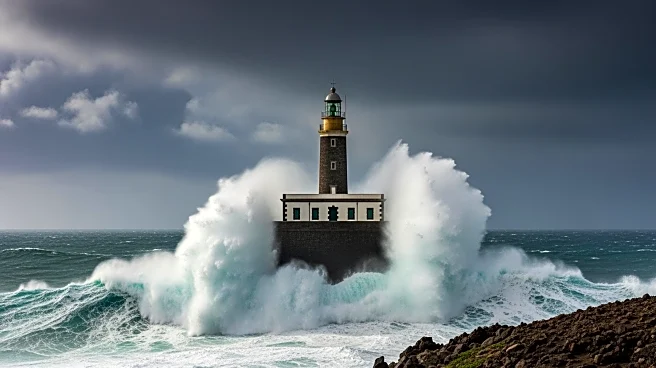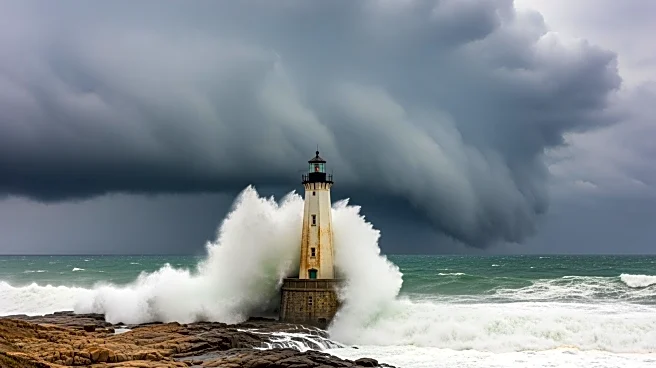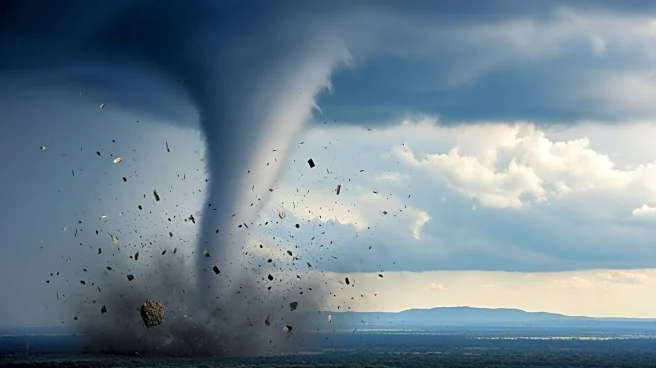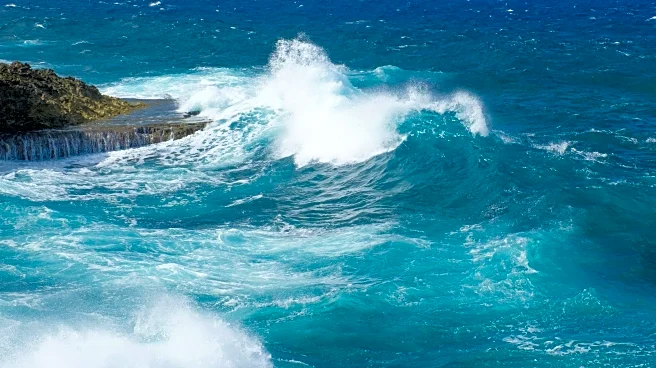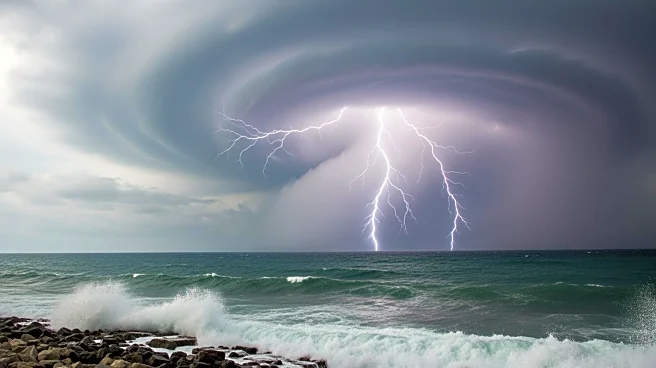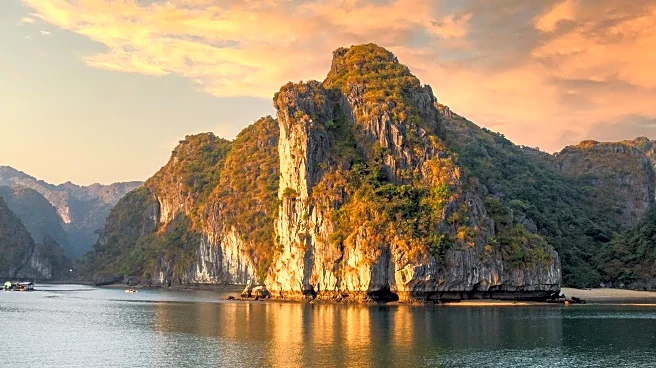What's Happening?
A severe storm in Tenerife led to tragic outcomes on Saturday, with three individuals losing their lives and at least 15 others sustaining injuries due to exceptionally high waves. The Canary archipelago
was on pre-alert for coastal hazards, with waves reaching up to four meters. The incidents occurred in various locations across the island, including Roque de Las Bodegas beach, El Cabezo de Granadilla de Abona beach, and Puerto de la Cruz. Despite warnings from authorities about dangerous sea conditions, several tourists ignored safety measures, resulting in multiple accidents. Emergency services were actively involved in rescue operations, but unfortunately, some victims could not be revived.
Why It's Important?
The storm in Tenerife underscores the critical importance of adhering to safety warnings during adverse weather conditions. The tragic events highlight the potential dangers posed by natural phenomena, particularly in coastal areas. The incidents serve as a reminder for tourists and locals alike to exercise caution and respect preventive measures to avoid similar tragedies. The impact of such events extends beyond immediate casualties, affecting local emergency services and healthcare facilities, which must respond swiftly to multiple emergencies. The situation also raises awareness about the need for improved communication and enforcement of safety protocols in tourist destinations.
What's Next?
Authorities in the Canary Islands are likely to continue monitoring weather conditions closely and may implement stricter safety measures to prevent future incidents. There may be increased efforts to educate the public and tourists about the risks associated with ignoring safety warnings. Additionally, local government and emergency services might review and enhance their response strategies to better handle such emergencies. The tragic events could prompt discussions on improving infrastructure and safety protocols in coastal areas to mitigate risks during severe weather conditions.
Beyond the Headlines
The storm's aftermath may lead to broader discussions on the ethical responsibilities of tourists and local authorities in ensuring safety during natural disasters. The incidents could also influence cultural perceptions of risk management and emergency preparedness in tourist-heavy regions. Long-term, there may be shifts in how coastal areas plan for and respond to extreme weather events, potentially leading to more robust safety regulations and infrastructure improvements.
